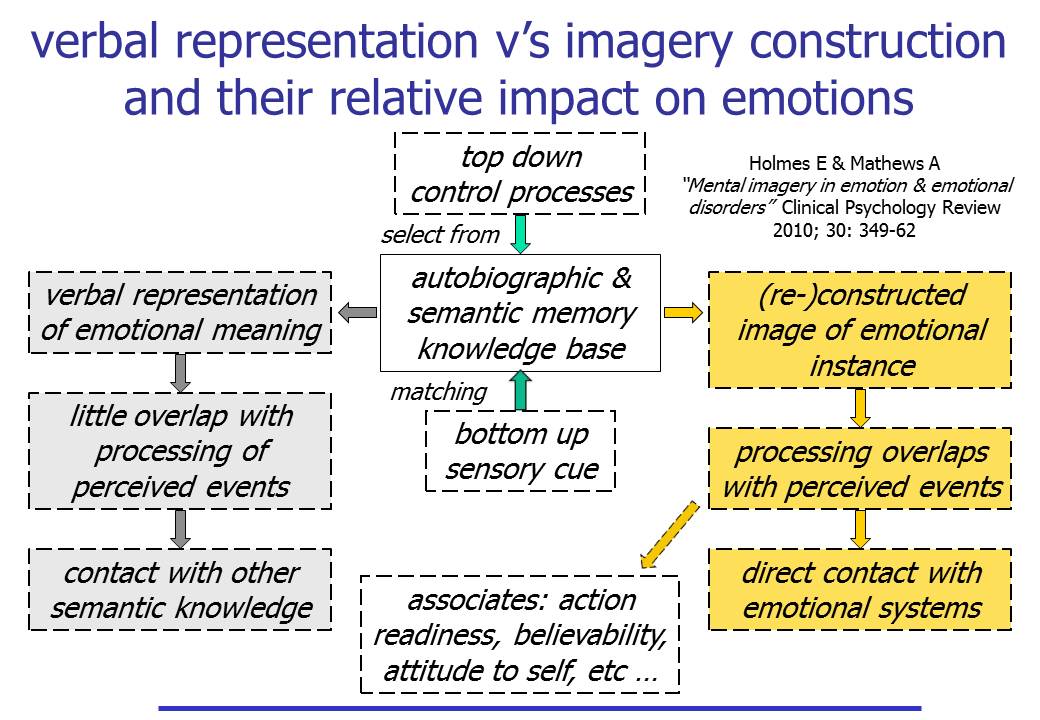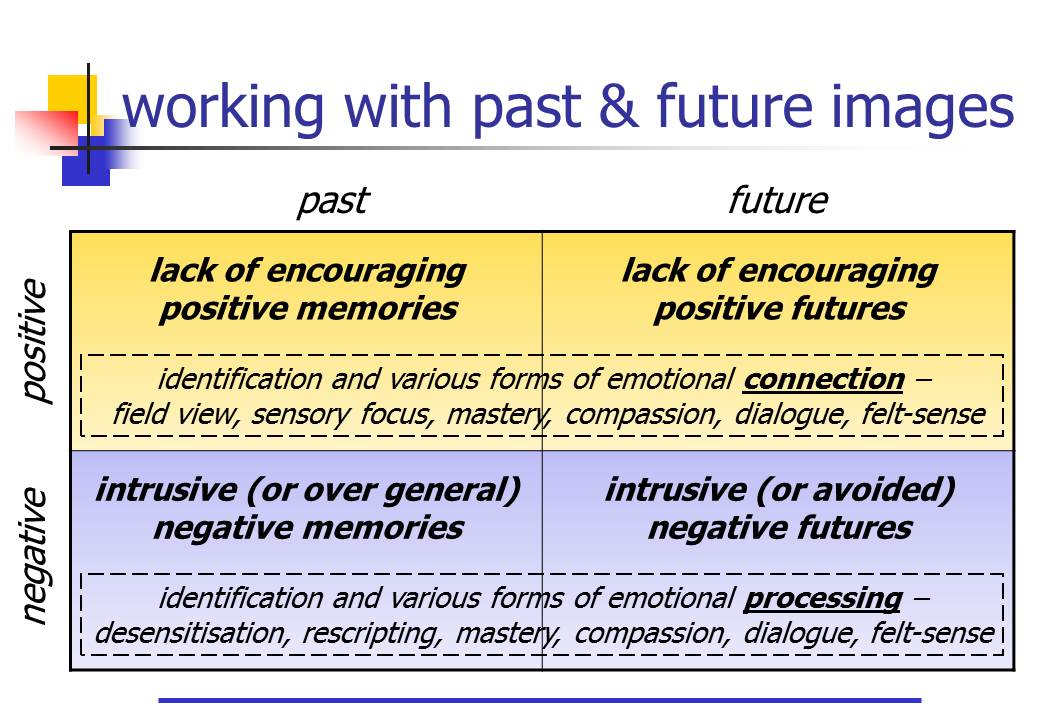Manchester BABCP conference: Emily Holmes & imagery (second post)
Last updated on 5th September 2010
I wrote yesterday about the first symposium that I got to at this year's BABCP conference - "More news from the imagery front". The "discussant" overviewing the symposium intelligently and encouragingly was Emily Holmes. Not bad considering that she was about to give the plenary presentation that I went to next - "Mental imagery: from flashbacks to flashforwards" (see page 28 of the page "Conference abstracts" book). Emily is something of a star in the CBT world (I think she has now graduated from being a "star in the making"). Great to see where some of the future's exciting new psychological research is coming from.
I'd got up at about 3.00am this morning to sort some loose ends in Edinburgh and get to the first morning train to Manchester, so my attention wasn't as sharp as it might have been during some of this talk. My notes say that Emily said early in the talk "Imagery is amazing". She then went on to make four points. 1.) "Seeing is believing". Images and other sensory modalities recruit many of the same brain areas as actual perception. 2.) "Imagery helps you learn". There are a cluster of trials in this area (for example in stroke rehabilitation), but Emily mentioned an early one on piano practice - the Pascal Leone et al study "Modulation of muscle responses evoked by transcranial magnetic stimulation during the acquisition of new fine motor skills". 3.) "Imagery promotes behaviour". Here she quoted the Libby et al "Picture yourself at the polls: visual perspective in mental imagery affects self-perception and behaviour" research. For me the puzzling thing about this latter study is that getting participants to picture themselves from a third person "observer" perspective seemed to be more effective in promoting subsequent behavioural change than getting them to picture the voting from a first person "field" perspective. Since first person perspectives tend to produce more associated emotion, I would have expected the results to have been the reverse of those found. However the main point Emily was highlighting was that imaging a behaviour can make it more likely one subsequently performs that behaviour. As an alternative example, the earlier Pham & Taylor research "From thought to action: Effects of process-versus outcome-based mental simulations on performance" makes this point with the somewhat more day to day behaviour of studying. 4.) "Imagery is particularly strongly connected to emotions." And here Emily cited some of her own research "Positive interpretation training: effects of mental imagery versus verbal training on positive mood." Clicking the "Publications" link on Emily's home page provides details and freely downloadable full text of nearly all her articles - a tremendous resource.
Probably like most other cognitive-behavioural therapists, my interest in imagery has been fuelled especially by learning to work better with the very difficult memories experienced by sufferers from posttraumatic stress disorder. There is now a realisation - again underlined by material presented at this conference - that imagery is much more important than just its relevance to PTSD treatment. So it is now clear that toxic memories are relevant across pretty much all disorders studied. Furthermore, using imagery can give us access to a whole raft of new therapeutic interventions. The following diagram highlights this breadth of application:
This diagram illustrates a four quadrant model of past & future, positive & negative images - with the reminder that usually it's best to increase the emotional & sensory vividness of positive images with less reliance on words, but to decrease the vividness of negative images by introducing more verbal processing. This and the subsequent diagram (below) - are downloadable both as Powerpoint (usable as two slides to a page handout) and as PDF files. For an extended six part model (including the present as well as past & future) see my post "Disagreeing with Jamie Pennebaker - writing can help past, present & future concerns".
So Emily's talk looked widely at different types of imagery. She mentioned the importance of whether imagery is experienced by a subject in first person field view (as if looking out through one's own eyes on the scene) or third person observer view (as if seeing oneself from another person's viewpoint). First person, field views tend to elicit more emotion. Research backing up all these - and subsequent - points is downloadable from her website. She talked too about the important distinction between thinking about things more verbally or thinking about things more using images. So considering a positive past or future experience from a verbally described observer perspective can actually drain out the "goodness" of the positive experience whereas considering the same event from a sensory-visual first person field perspective is likely to boost good feelings. Of course with painful "toxic" memories, mixing verbal processing with the sensory-visual helps to drain away the "badness" which is contrastingly a welcome outcome. The following diagram, adapted slightly from Emily's fine paper "Mental imagery in emotion and emotional disorders", illustrates these points:

This second diagram illustrates 1.) the generation of spontaneous (bottom up) or deliberate (top down) images. 2.) both pathways lead (right) to emotional experiences that trigger brain pathways which overlap with those activated by real events. 3.) the associated properties of imagery: readiness, believability, attitude, etc. 4.) the decreased emotion & increased accessibility to challenge from other experiences when processing of the image is by the left hand more verbal route.
Emily talked about imagery as "an emotional amplifier" using the example of bipolar disorder. She also discussed her recent research - described in the penultimate talk mentioned in yesterday's blog "Can we dampen down intrusive imagery such as flashbacks soon after a stressful event using simple tasks?" One can increase or decrease the likelihood of developing flashbacks in the aftermath of trauma by getting subjects to engage in competing verbal/conceptual (likely to increase) or sensory/perceptual (likely to decrease) tasks. It seems quite likely that other aspects of these findings may have relevance to the trauma treatment Eye movement desensitization & reprocessing (EMDR). Overall the talk was rich with useful information and possibilities. Exciting times.

